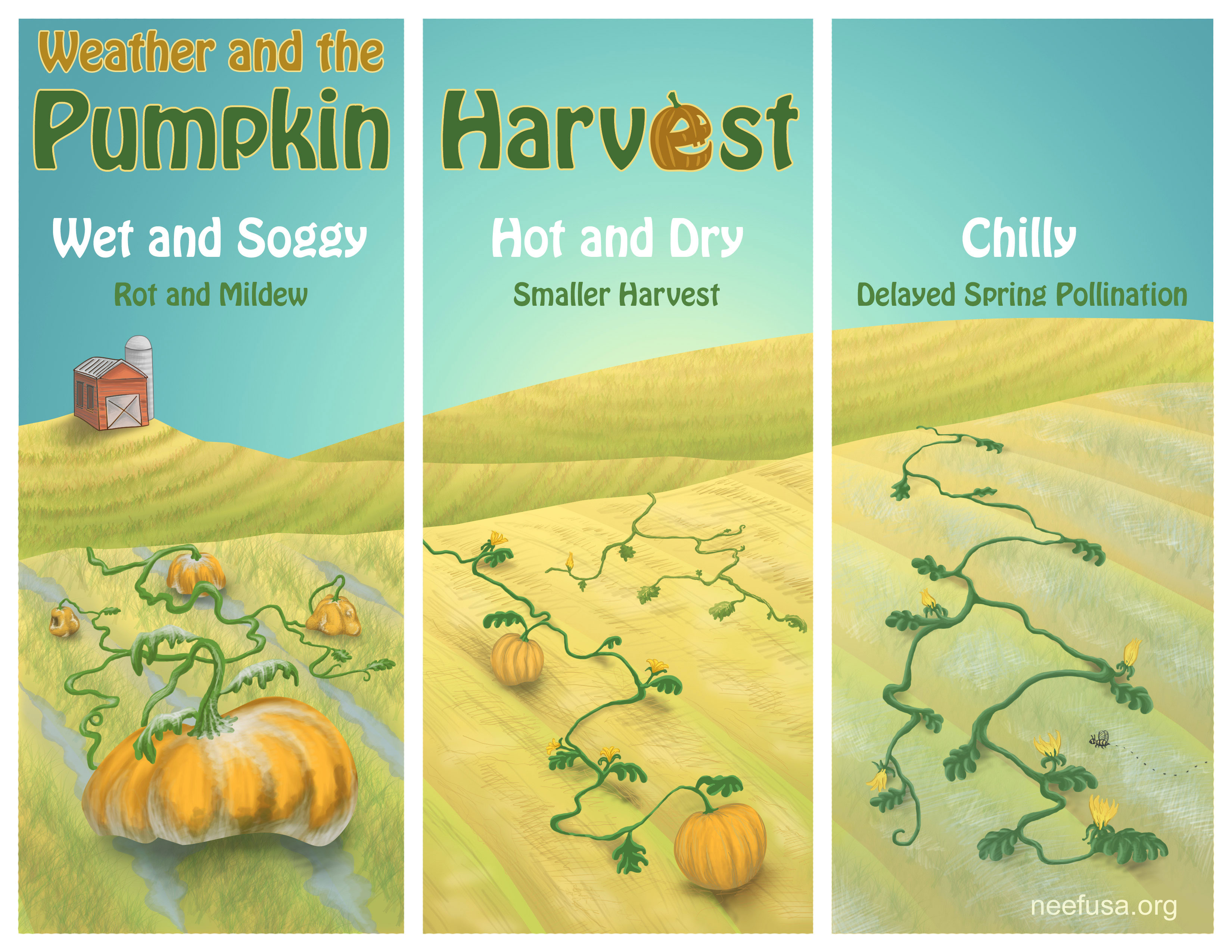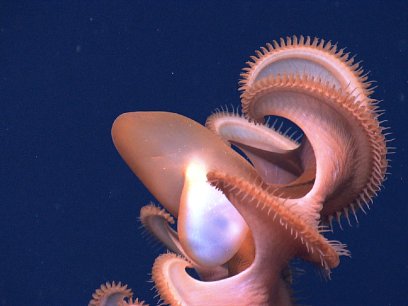Story
Weather and Pumpkin Harvest

About 80% of the United States’ pumpkin supply is available in October, but pumpkin makes an appearance year-round in pies, breads, and other foods. Weather can have a big impact on the yearly pumpkin harvest.
- Wet and soggy: Too much rain can delay planting and cause crops to rot. Mildews, which thrive in wet conditions, can damage leaves and stems or kill pumpkin vines and fruits.
- Hot and dry: Dry, hot weather can cause pumpkins to produce too many male blossoms and too few female blossoms, resulting in a smaller harvest. Lack of water during droughts can also result in smaller and lighter-weight pumpkins.
- Chilly: An early freeze can kill pumpkins. And, chilly weather in the spring can prevent pumpkin blossoms from germinating. Why? Because bees—which carry pollen from plant to plant—don’t fly until the temperature is at least 55 degrees. Without bees and pollination, there are no pumpkins.
Image

If you are carving or cooking this year, put the whole pumpkin to use. If you don’t eat the seeds yourself, spread them outside as a snack for birds and squirrels. And, instead of weighing down your trash bags and sending past-their-prime pumpkins to the landfill, put them to use in your garden. Pumpkins can be added to compost piles, where they will decompose and add nutrients to your compost.
Sources:
- The National Center for Appropriate Technology. 2010. “Organic Pumpkin and Winter Squash Marketing and Production.” Accessed October 15, 2015. https://attra.ncat.org/attra-pub/summaries/summary.php?pub=30.
- University of Illinois Extension. 2015. “Pumpkins and More: Pumpkin Facts.” Accessed October 15. http://www.urbanext.uiuc.edu/pumpkins/facts.html.
Topics


